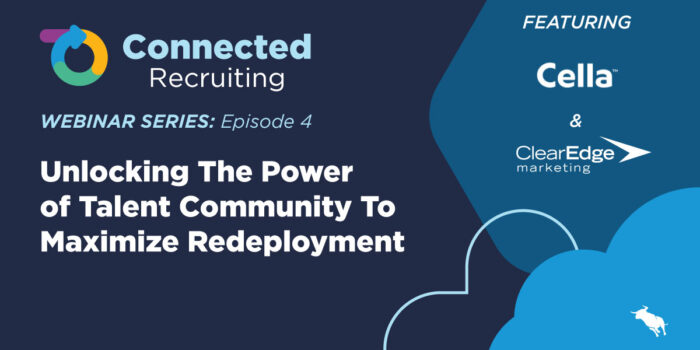The world of staffing has changed. As a result of digital transformation, a younger talent…

Top Tips for Building Your Tech Stack

Amidst constantly developing technology and a shifting industry landscape, building a tech stack that suits the needs of your staffing firm can be challenging. How can you ensure you’re not just choosing the right set of technologies but putting them to good use?
At TechRuum Engage Boston, Nina Eigerman, SVP of Alliances and Business Development at TechRuum, sat down with staffing industry leaders from organizations of varying sizes and sectors to learn a few universal tips for building your tech stack. Hear from Tim Pröhm, VP of KellyX, Roxanne Kos, Sr. Director, Enterprise Applications at Vaco, and Lian Perez, Systems Manager at HealthCare Support, on how they’ve made the most of the vast technology ecosystem.
Vet your vendors
“How do you rate and how do you grade the capabilities of the vendor? I think that’s an important thing,” said Pröhm. It’s essential for a technology vendor to act as a true partner to an organization and to be able to scale up and grow alongside them.
Our panelists also discussed the importance of smoothly integrating new technology with your current stack. “Every vendor I talk to, they say, ‘Hey, we have open APIs. It’s no problem at all.’ Until you go through an implementation process, and then they can only map three fields, but we need 29, or something like that,” said Pröhm. “So the marketplace concept is really nice from my point of view because it takes a lot of the pain and guesswork away from us as an organization since we know there was vetting in the beginning.”
Document your process
Before you implement technology, get granular and isolate the benefit of the tool. What business problem are you solving? How will your new tech integrate with your existing workflow?
“Do the hard work up front,” said Kos. “The software is not going to magically fix your problems. You have to dig in and document the scope. Putting that time and effort up front is painful because everybody’s excited. We got this new technology, and we can’t wait to get it in place, but that will come back to bite you later. And your scope will creep. You’ll end up with either a product that’s not functional or one that is so customized that you defeat the purpose of a technology that can scale because you won’t be able to upgrade it. You won’t be able to take on enhancements, or things will start conflicting with your customizations, and you’ll have to start over again. You have to scale all that back and start with the core.”
Added Pröhm, “At the end of the day, the question is always, what problem should it solve? Whenever we talk technology, we strip all the vendor names out. We only want to talk about the features and the functionality. What is it that you want the tool to do?”
Plan your adoption strategy
Tech implementation can be daunting, but having a comprehensive adoption plan helps break it down into achievable milestones — and it’s essential to making the most of your technology. Building a tech stack should always be a continuous process, wherein your recruiters constantly learn new features and best practices.
“Ongoing training is always something we like to push in our organization,” said Perez. “We always want to ensure we communicate with our team and keep the training ongoing so that our recruiters are using the tool to their best ability. If you don’t have that accountability plan at the end to ensure adoption and best practices, you almost have to start over.”
When building your tech stack, your greatest resource is your people. Our panelists spoke on the importance of involving your entire organization: “Instead of sitting as an IT group or as an executive team or even an operational team and making those decisions get the actual recruiters and salespeople in it,” said Kos.
“You have to be really in tune with your staff. So whether that’s recruiters, sales, it’s all about the end user at the end of the day,” added Perez. “If they don’t understand how to use the tool, you’re, you’re not, it’s not going to bring you success. So be in tune with what the problems are with your team and what they would like to accomplish by using the tool.”
Measure and report
Once you’ve implemented your solutions, how can you ensure your team is leveraging them to the best of their ability? This is where measuring and reporting come in.
“As our staffing businesses grow and evolve and we add additional lines and different components that are new to the market, there’s not always a perfect fit software,” said Kos. “But try to ensure that there’s a core that you always look at and determine the ROI; the reporting component also increases adoption. If you don’t measure, people tend to think, ‘Well, I don’t have to do that because it doesn’t matter.’ But when you measure it, which ties into ROI and decision-making, they take a different approach.”
Added Perez, “KPIs are essential. So we use TechRuum Analytics to have all those gamified dashboards for our recruiters, and we drill that down from the user up to the top by division. So you’re able to see the scalability from beginning to end.”
Know when to make changes
If there’s one universal truth about technology, it’s that it’s constantly evolving. Once you have your tech stack, it’s key to continuously evaluate it, not just to see if it’s serving your firm but to make sure you’re not working with tech that could be outdated.
“Usage is critical,” said Perez. “If it’s possible for the technology, we run usage reports and see how the recruitment team interacts with the tool. The minute that usage starts to dip, if retraining and reframing how they use the tool in their workflows isn’t working, it will not work in a few months. So evaluating all the usages, they’re either having or not having is super important because you just have a fancy tool sitting in your marketplace folder.”
“We acknowledge that the tech deck we built today will not be the one we have in two years,” added Pröhm. “As an organization, we need to be aware of that. At the same time, we also constantly scan for new technologies because there might be someone else that provides a better and cheaper solution than the one we’re using today. A lot of staffing organizations might not have the bandwidth to do that, but I think it’s definitely worth thinking about investing in that piece.”
Added Kos, “Adoption’s not perfect. You’re never finished. Because the moment you’re done, it’s already outdated. You have to revisit your tech stack constantly, and if adoption’s waning, see what’s going on there and dig into it; is it a tool that’s still valid for your organization?”
Choice. Confidence. Customization. Learn more about the TechRuum Marketplace and discover our 100+ vetted partner technologies to build your recruitment tech stack.
Source link


Comments (0)